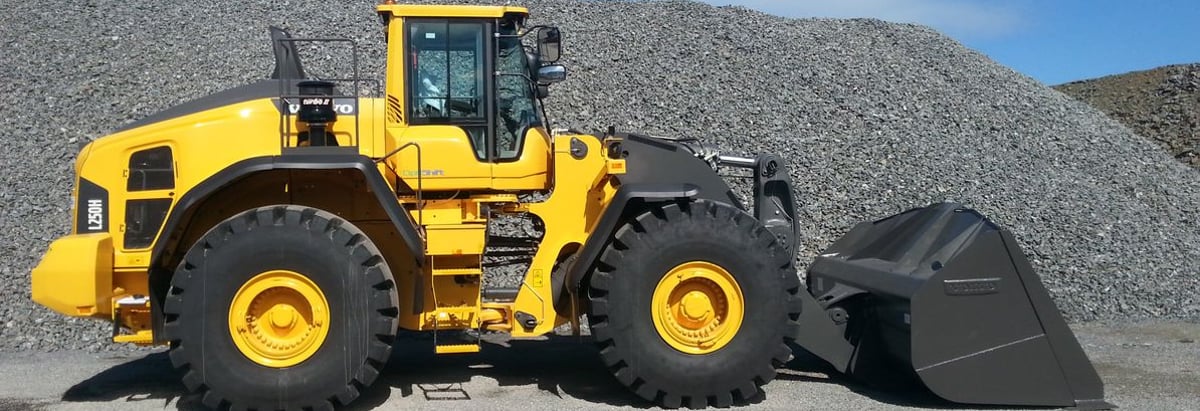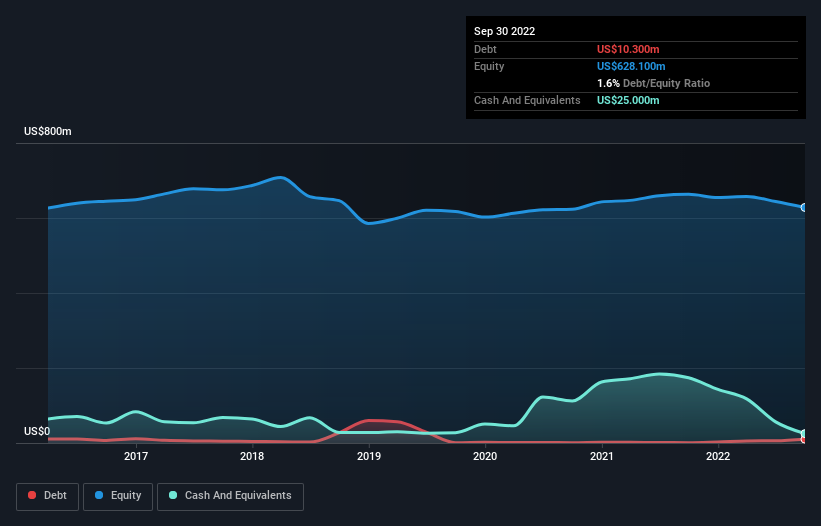- United States
- /
- Machinery
- /
- NasdaqGS:ASTE
Here's Why Astec Industries (NASDAQ:ASTE) Can Manage Its Debt Responsibly

The external fund manager backed by Berkshire Hathaway's Charlie Munger, Li Lu, makes no bones about it when he says 'The biggest investment risk is not the volatility of prices, but whether you will suffer a permanent loss of capital.' When we think about how risky a company is, we always like to look at its use of debt, since debt overload can lead to ruin. Importantly, Astec Industries, Inc. (NASDAQ:ASTE) does carry debt. But the real question is whether this debt is making the company risky.
When Is Debt A Problem?
Debt is a tool to help businesses grow, but if a business is incapable of paying off its lenders, then it exists at their mercy. Part and parcel of capitalism is the process of 'creative destruction' where failed businesses are mercilessly liquidated by their bankers. While that is not too common, we often do see indebted companies permanently diluting shareholders because lenders force them to raise capital at a distressed price. Of course, plenty of companies use debt to fund growth, without any negative consequences. The first thing to do when considering how much debt a business uses is to look at its cash and debt together.
View our latest analysis for Astec Industries
What Is Astec Industries's Debt?
As you can see below, at the end of September 2022, Astec Industries had US$10.3m of debt, up from US$900.0k a year ago. Click the image for more detail. However, its balance sheet shows it holds US$25.0m in cash, so it actually has US$14.7m net cash.

How Healthy Is Astec Industries' Balance Sheet?
We can see from the most recent balance sheet that Astec Industries had liabilities of US$283.9m falling due within a year, and liabilities of US$32.6m due beyond that. Offsetting this, it had US$25.0m in cash and US$166.9m in receivables that were due within 12 months. So it has liabilities totalling US$124.6m more than its cash and near-term receivables, combined.
Of course, Astec Industries has a market capitalization of US$834.2m, so these liabilities are probably manageable. Having said that, it's clear that we should continue to monitor its balance sheet, lest it change for the worse. While it does have liabilities worth noting, Astec Industries also has more cash than debt, so we're pretty confident it can manage its debt safely.
It is just as well that Astec Industries's load is not too heavy, because its EBIT was down 79% over the last year. Falling earnings (if the trend continues) could eventually make even modest debt quite risky. The balance sheet is clearly the area to focus on when you are analysing debt. But it is future earnings, more than anything, that will determine Astec Industries's ability to maintain a healthy balance sheet going forward. So if you want to see what the professionals think, you might find this free report on analyst profit forecasts to be interesting.
Finally, a business needs free cash flow to pay off debt; accounting profits just don't cut it. Astec Industries may have net cash on the balance sheet, but it is still interesting to look at how well the business converts its earnings before interest and tax (EBIT) to free cash flow, because that will influence both its need for, and its capacity to manage debt. Over the most recent three years, Astec Industries recorded free cash flow worth 71% of its EBIT, which is around normal, given free cash flow excludes interest and tax. This cold hard cash means it can reduce its debt when it wants to.
Summing Up
Although Astec Industries's balance sheet isn't particularly strong, due to the total liabilities, it is clearly positive to see that it has net cash of US$14.7m. The cherry on top was that in converted 71% of that EBIT to free cash flow, bringing in -US$113m. So we are not troubled with Astec Industries's debt use. Even though Astec Industries lost money on the bottom line, its positive EBIT suggests the business itself has potential. So you might want to check out how earnings have been trending over the last few years.
If you're interested in investing in businesses that can grow profits without the burden of debt, then check out this free list of growing businesses that have net cash on the balance sheet.
If you're looking to trade Astec Industries, open an account with the lowest-cost platform trusted by professionals, Interactive Brokers.
With clients in over 200 countries and territories, and access to 160 markets, IBKR lets you trade stocks, options, futures, forex, bonds and funds from a single integrated account.
Enjoy no hidden fees, no account minimums, and FX conversion rates as low as 0.03%, far better than what most brokers offer.
Sponsored ContentNew: Manage All Your Stock Portfolios in One Place
We've created the ultimate portfolio companion for stock investors, and it's free.
• Connect an unlimited number of Portfolios and see your total in one currency
• Be alerted to new Warning Signs or Risks via email or mobile
• Track the Fair Value of your stocks
Have feedback on this article? Concerned about the content? Get in touch with us directly. Alternatively, email editorial-team (at) simplywallst.com.
This article by Simply Wall St is general in nature. We provide commentary based on historical data and analyst forecasts only using an unbiased methodology and our articles are not intended to be financial advice. It does not constitute a recommendation to buy or sell any stock, and does not take account of your objectives, or your financial situation. We aim to bring you long-term focused analysis driven by fundamental data. Note that our analysis may not factor in the latest price-sensitive company announcements or qualitative material. Simply Wall St has no position in any stocks mentioned.
About NasdaqGS:ASTE
Astec Industries
Designs, engineers, manufactures, markets, and services equipment and components used primarily in road building and related construction activities worldwide.
Excellent balance sheet average dividend payer.
Similar Companies
Market Insights
Community Narratives



